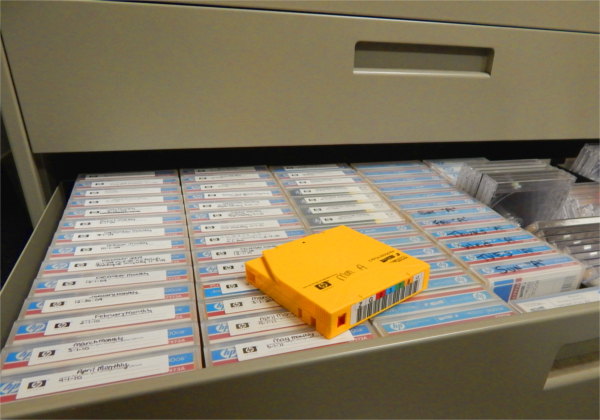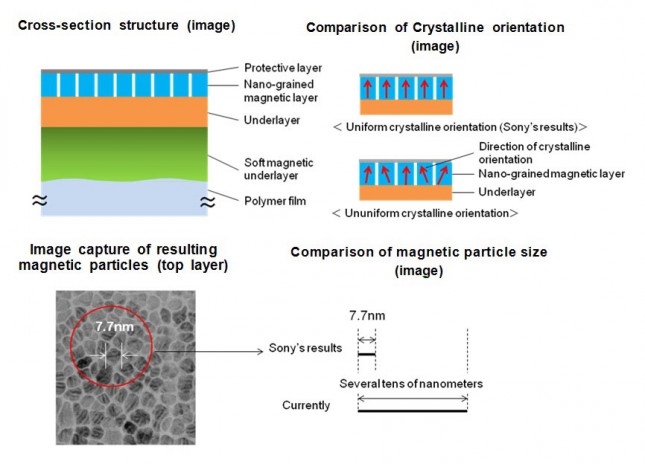Sony Innovating In Tape Technology… Seriously
Sony is making some waves in (believe it, or not) magnetic tape technology. Reaching a maximum capacity of an astounding 185TB, Sony hit a world record in data density of 148GB per square inch. This massively outpaces the current industry standard LTO variants’ density rate of 2GB per square inch as well as maximum capacity by a factor of 70. This means that my entire collection of Ultrium 3s at 800GB could be contained on a single cartridge of Sony’s new tape with space for another 13 years worth of backups.

Sony detailed the fine workings in their press release:
Sony has developed a new vacuum thin film forming technology which is able to form extremely fine crystal particles with the aim of creating a practical, next generation tape storage media. This newly developed magnetic tape technology uses sputter deposition, a type of vacuum thin film forming technology, to generate multiple layers of crystals with a uniform orientation on a polymer film with thickness of less than 5 micrometers. Until now, when the sputter method was used to deposit a thin film of fine magnetic particles on a polymer film, roughness on the surface of the soft magnetic underlayer caused the orientation of the crystals in the underlayer above it to become non-uniform. This in turn caused non-uniform crystalline orientation and variations in the size of the magnetic particles (grain) in the nano-grained magnetic layer directly above the underlayer, and prevented increases in recording densities. By optimizing sputter conditions and independently developing a soft magnetic underlayer with a smooth interface, Sony has made it possible to minimize disparities in crystalline length and growth. This enabled Sony to create a nano-grained magnetic layer composed of fine magnetic particles with an average size of 7.7 nm. When the magnetic tape created using this technology was measured and evaluated using an exploratory recording and assessment device, this new media was shown to achieve the world’s highest areal recording density of 148 Gb/in2, equivalent to approximately 74 times the capacity of conventional coated tape media for data storage.
The breakthrough comes at a time where even Facebook, maintaining the world’s largest collection of biometric data and images, suggested that Sony’s Blu-Ray was the most efficient method of cold storage on the market. At Open Compute, Facebook VP of infrastructure engineering Jay Parikh cited the 50% cost reduction and 80% increase in energy efficiency as a reason to switch non-essential data storage to BRD. With today’s tapes running about five cents per gigabyte, I’d be surprised to see BRD outperform Sony’s new format in either cost or energy. Speed would likely be the only crutch, but unfortunately there’s no official word from Sony on read/write speeds. Sony says that they’re definitely looking to commercialize the new tapes as well as pushing their record breaking density.

